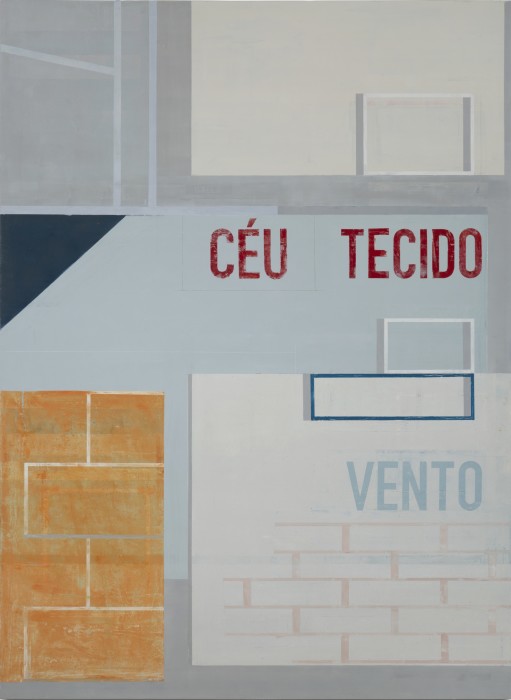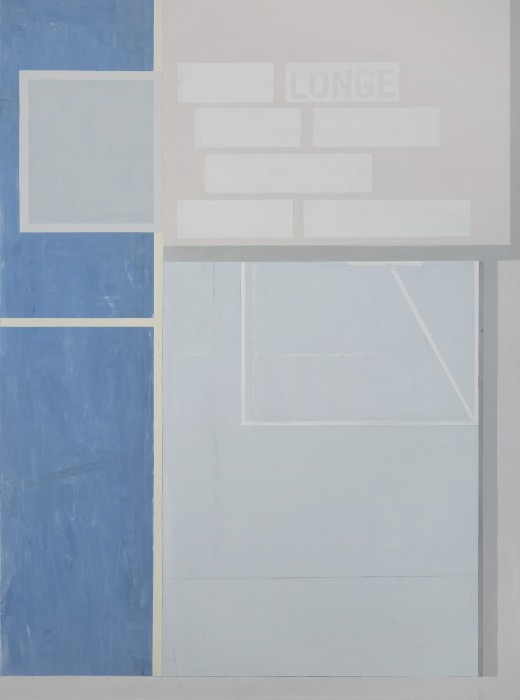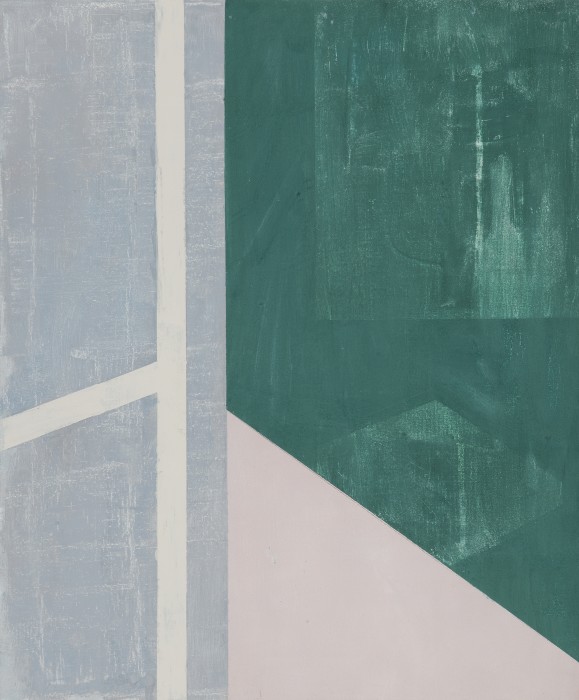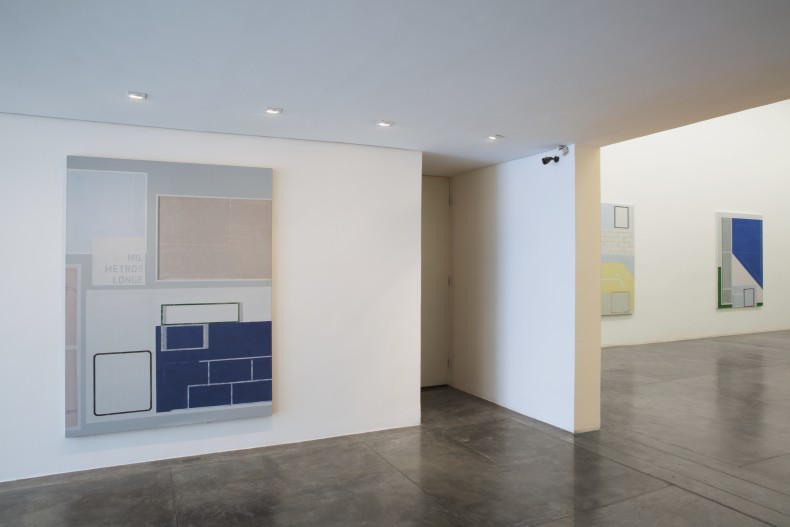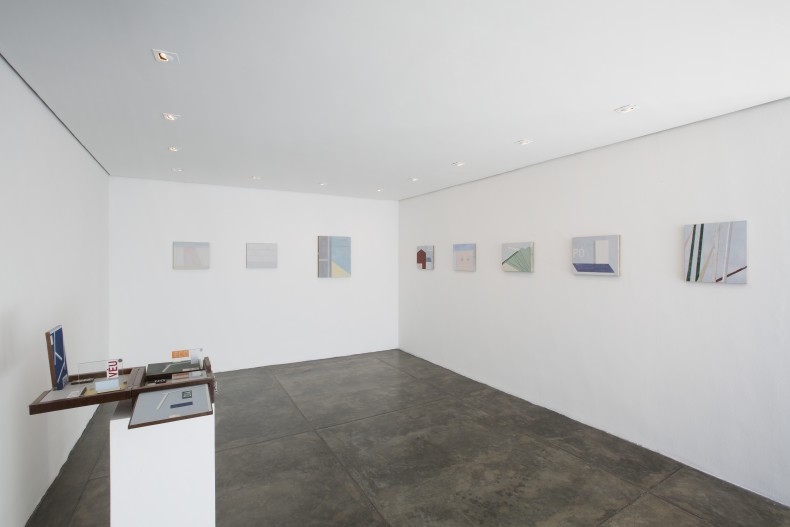Galeria Nara Roesler opens its 2015 exhibition season in São Paulo with the show Horizonte, Deserto, Tecido, Cimento (Horizon, Desert, Fabric, Cement), slated to run from 02.28 to 03.28.2015, featuring new productions by Fabio Miguez, a household name from the 1980s generation. One of the members of the seminal Casa 7 studio alongside Nuno Ramos, Rodrigo Andrade, Carlito Carvalhosa and Paulo Monteiro, Miguez will bring to the gallery the results, produced in the last two years, of a line of inquiry that dates back to 2009.
From that point on, the artist developed a concise imagery, combining his own geometric iconography with words culled, initially, from poems by João Cabral de Melo Neto, among other sources. "I went for Melo Neto because his poems are dry, clean, characterized by nouns. If the words are too pretty they can reek of poor taste,” says Miguez.
As Tiago Mesquita put it in his introductory text for the exhibit, "Not by chance, on composing these images, Miguez employs pictures and themes taken from the paintings of Piero della Francesca and Henri Matisse. Likewise, he borrows words from the writings of João Cabral de Melo and Samuel Beckett. The artist lists a repertoire of appropriated or made-up fragments that are synthetic, direct. They hint at this beauty that is somewhat vague, something of a memory that wanes quickly. It’s a roof, that will be a trapezoid, a diagonal, grey, a horizon of departure."
In fact, in his latest pictures are streamlined, deft compositions that employ geometrical and written elements. The shapes that are created don’t hurt the superficiality of the paintings which, whilst providing perspective, do not insinuate themselves beyond two-dimensionality. The seemingly rough lines conceal a masterful pictorial quality, constituted in this set through the juxtaposition of thin layers that appear to stretch, allowing glimpses of the layers underneath.
In these particular works, more than from the prowess of what’s visible, the meaning arises from beyond, from outside the frame. In the convergence of rudimentary figures and the noun-ridden, streamlined writing, the artist situates the tension between that which can be seen and the meanings inherent to printed signs. The graphic elements are recurrent, as if the artist were creating his own universe, his private lexicon.
Mesquita defines it: " It’s like someone who, upon telling you about a happy day, enumerates a few scattered recollections: the weather was hot, the sky was blue, I was lying down before a slanted wall. Some of this subject’s experience is being told, yet what we get is residues: loose fragments with little to no connection between them. The full dimension of the recreated space doesn’t get conveyed to us. It doesn’t seem tied together. It’s as though it were dissipating and giving way to the desert. "
Thus, the spectator gets surprised by the hiatus that subverts the dulled day-to-day gaze. In the words of critic Lorenzo Mammi, Fabio Miguez will not "adhere to a general communication system where each line is a sign for something; on the contrary, he makes each sign into a line, i.e. he partakes in a configuration it would make no sense to separate him from, one that at once changes him and gets changed by him."
figueiredo ferraz collection
Parallel to the exhibition featuring previously unseen paintings, the annex space will house a set of six pieces made from oil and wax on various materials – wood, glass, canvas, paper – plus a photograph. All artworks are from the Figueiredo Ferraz collection, one of the country’s foremost anthologies, owned by Dulce and João Carlos Figueiredo Ferraz, and housed in the city of Ribeirão Preto, São Paulo.
The collection comprises approximately 1,000 works of art and is partially open to individual and group visits at the IFF (Instituto Figueiredo Ferraz), a facility in São Paulo’s Alto da Boa Vista district, established in 2011 and designed to spread art and culture in the city.
The collector was in very close contact with the Casa 7 artists since the studio’s inception in 1982. Artists such as Miguez were the authors of the earliest pieces in the collection, which started being assembled in the 1980s, a time when Ferraz was already visiting artists’ studios and households. The parallel show features artworks spanning several decades of the artist’s production.
